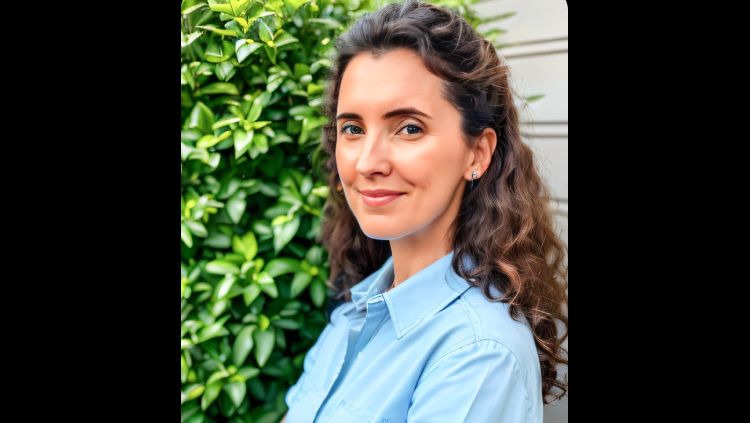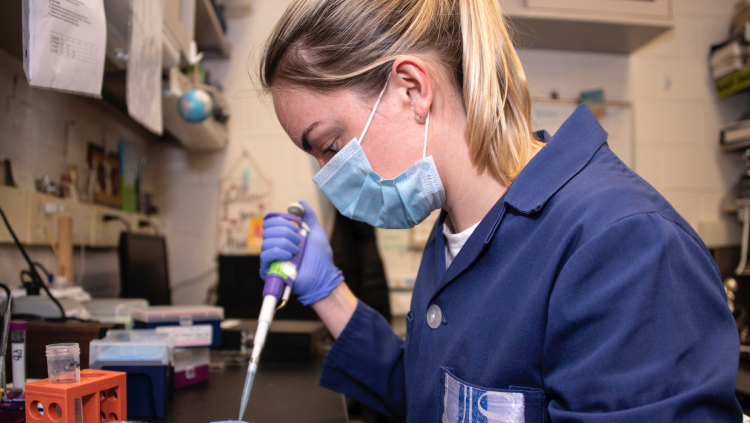
Charlotte Boettiger, who is actively involved in SfN’s North Carolina Triangle Chapter and serves on SfN’s Government and Public Affairs committee, shares why engaging policymakers at the local level is an important and powerful way to make the case for federal funding to support science research. Specifically, she highlights how to educate your local representatives about the importance of funding basic science research and ways to engage policymakers through your SfN chapter.
Overall, why is it valuable to engage your policymakers to support biomedical research?
Policymakers, in large part, are not scientists. So, it's our obligation, particularly if we are publicly funded scientists, to educate them about the funding that they provide, what that funding enables, and why their support is essential.
What are some of the advocacy activities you’re involved in at the local level and what have you learned from those experiences?
In North Carolina, where I live and work, we are lucky that our legislators provide consistent scientific research support. We're not trying to convince the unconverted. Rather, our role as scientists is to empower our representatives to be even stronger advocates for science when talking to their colleagues in Congress.
We’ve held chapter town hall meetings with our local representative, David Price. The advice he’s shared with us about how to best advocate for scientific research has been illuminating.
He encouraged us to remember that legislators are people, and that they respond to narrative. We have to figure out how to construct compelling stories that legislators can relate to and remember.
If you’d like to plan a town hall, pay attention to the congressional schedule, and choose a date when you know your representatives will be back from Washington, D.C. Keep in mind that their schedules aren’t always flexible and that they’re typically resistant to scheduling anything too far in advance.
Our local chapter has also arranged meetings with our senators when they are in town. One of our senators has an office in the state capitol, and we had the chance to meet with staffers there to advocate for research funding.
SfN has materials available with state-level data, including the number of SfN members, the amount of NIH and NSF funding that comes into the state, and the number of jobs that are created as a result of that funding.
Those materials have been really helpful because they provide concrete pieces of data to share with our elected officials so that they know how many of us there are, how big the endeavor is, and why it should be important to them as our representatives.
What’s the best way to frame the narrative of your research for policymakers and the public, even when details may be complicated?
When I was in graduate school, I read advice by Andrew Murray, a cell biologist, who said it was our obligation to figure out a way, in a few minutes or less, to explain what we do.
He shared when a nonscientist asks what he does, for example on an airplane, he would explain his work in cell cycle regulation by saying he studies how cells know how to put their socks on before they put the shoes on.
I think that all of us, if we work at it, can figure out how to make what we do understandable to anyone, from kindergartners to grandparents. We just need to think about who is our audience.
For example: my lab studies addiction. Getting down to the nitty-gritty of what we do on a daily basis is highly complicated. It may be mind-numbing to explain the details of human subject research, functional neuroimaging, PET imaging, and behavioral pharmacology to someone who's not interested in coding or physics.
However, through a simple narrative, people can understand why addiction is a difficult problem. Substance abuse is one of the largest societal costs, and it's one of the biggest public health problems in the world that impacts many families.
What’s the greatest misconception the public has about science, and what can scientists do about it in their communications with the public and policymakers?
The public generally thinks of scientific discovery as a linear, predetermined course, but it’s not.
That misconception comes from our current system of science education. Science classes set up an experiment with a predetermined outcome. Students follow that experiment and then get that expected outcome. The textbooks have these nice, linear stories of how we tested something and then made a discovery, and then continued to test in a straightforward way. It all sounds like a simple procedure where you know the path and you just have to stay on it.
Science isn't really like that.
In most cases, we don't know what we don't know. We're trying to figure out how to get to the top of the mountain, so to speak, and we don’t have a set path. A lot of times, serendipity comes along, and we discover something that we weren't intending to find, so we go in a completely new and important direction.
That’s why funding basic research that doesn’t have an immediately obvious health benefit is crucial — and why we need to continue to make the case to our policymakers, starting at the local level, to invest in our work.
Speaker






